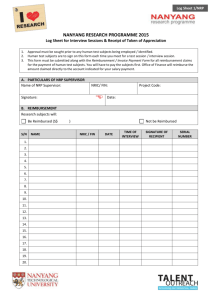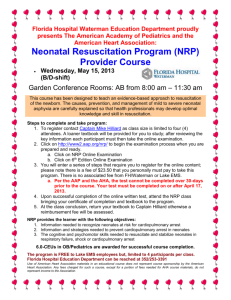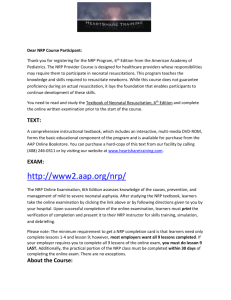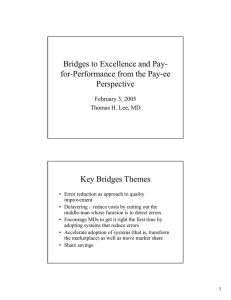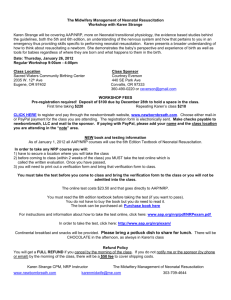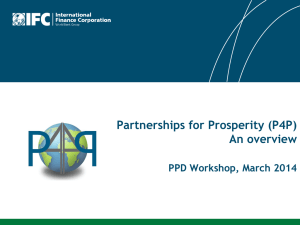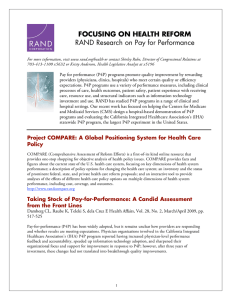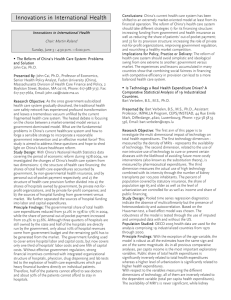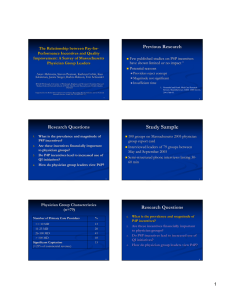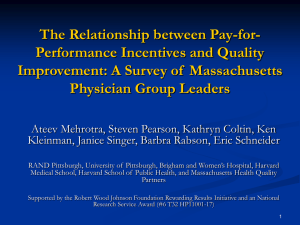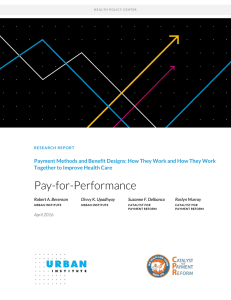Pay-for-Performance Programs: the U.S. Experience Eric Schneider, M.D., M.Sc.
advertisement
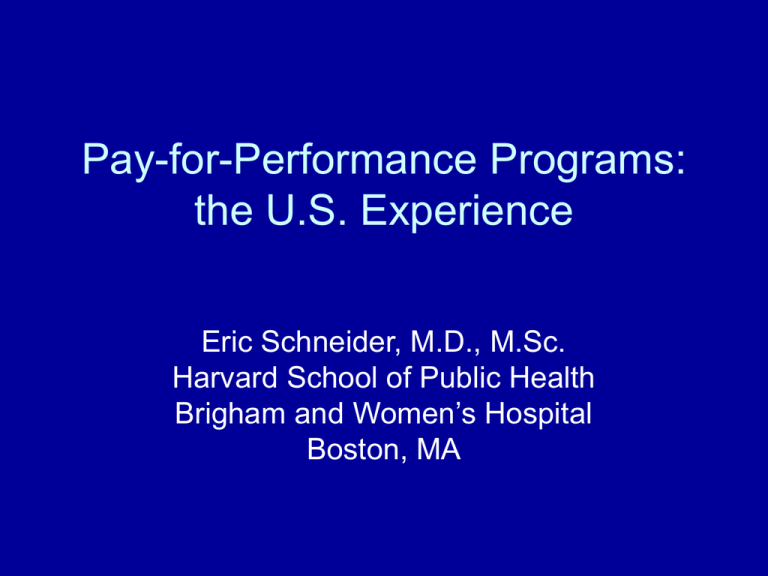
Pay-for-Performance Programs: the U.S. Experience Eric Schneider, M.D., M.Sc. Harvard School of Public Health Brigham and Women’s Hospital Boston, MA “Market-oriented” strategies for health care: a 20-year journey Performance Visibility Peers Performance Rewards Public Performance Feedback Patients Purchasers Market Share Payments & Penalties “Report Cards” “P4P” Public Reporting: Limited Evidence of Impact • Cardiac surgery patients did not use riskadjusted mortality results on hospitals, surgeons • Consumers are often befuddled by report cards • Scant evidence that consumers use health plan report cards to select plans Purpose of Measurement Goals PATHWAY 1 Selection Change Results (Performance) Selection & Accountability Measurement for Improvement Knowledge about Process and Results Knowledge about Performance Consumers Purchasers Regulators Patients Health Plans Clinicians Accreditors PATHWAY 2 Organizations Motivation $$$ Two Pathways to Quality Improvement Care Delivery Teams and Practitioners The PAY in Pay-for-Performance Total U.S. Health Expenditures (2001) = $1.4 trillion Other private Out-of-pocket $76 billion 5% $206 billion 14% Medicare $242 billion 17% Medicaid 16% Private Health Insurance $496 billion 35% 13% $224 billion Other public $180 billion Source: Katharine Levit, et al., “Trends in U.S. Health Care Spending, 2001,” Health Affairs (January/February 2003) Private Payers: 242 U.S. Health Plans on P4P • 71% had programs to pay for performance • 68% had P4P for physicians • 42% had P4P for hospitals Survey Data, 2005 Private Health Plans: Expanding Scope of P4P • Broad range of total dollars and ambition – Thinking about it – Modest payments, a few specific measures – Large payments, many measures, grants for IT – Tiered networks Public Payers: Many New Demonstration Projects Under Way • Centers for Medicare and Medicaid Services – Premier Hospital Demonstration – Physician Voluntary Reporting Initiative • Medicaid state agencies – Eleven state agencies using some form of P4P with health plans – Center for Health Care Strategies (CHCS) recently initiated P4P Purchasing Institute for Medicaid agencies Premier Hospital Demo • 2003-2006 • 278 hospitals participate voluntarily • 34 process and outcome measures – Heart failure, heart attack, pneumonia, coronary artery bypass graft and knee replacements • Hospitals can receive bonus based on performance – Top decile: 2% bonus on DRG payment for the condition – Second decile: 1% bonus • Year 1 bonus incentive payments: – $900 to $847,000 P4P: Does it Work? Early Results Paint a Nuanced Picture • Quality improved – Pre-post evaluations without control groups • Quality improved slightly or not at all – Quasi-experiments with contemporaneous comparison groups • Success and failure appear related to many complex factors – Program design – Implementation Factors Related to P4P Success and Failure • Sponsor leverage in fragmented payment environments • Amount of incremental revenue • Selection, scope, and perceived validity of quality measures • Design of payout (low-performing practices?) • Readiness of physician practices for QI • Effectiveness of QI innovations Concerns about P4P in the U.S. • Business model for development and maintenance of standardized quality and efficiency measure sets? • Is the data infrastructure adequate for valid measures? • How will “gaming” be addressed? • Is “new money” needed to retool MD practices? • Will P4P undermine professionalism? • Will P4P impede access and increase socioeconomic disparities in quality? Conclusions • Pay-for-performance has captured attention • First formal evaluations show mixed results • Many questions remain unanswered, but funding for rigorous evaluation may be limited
